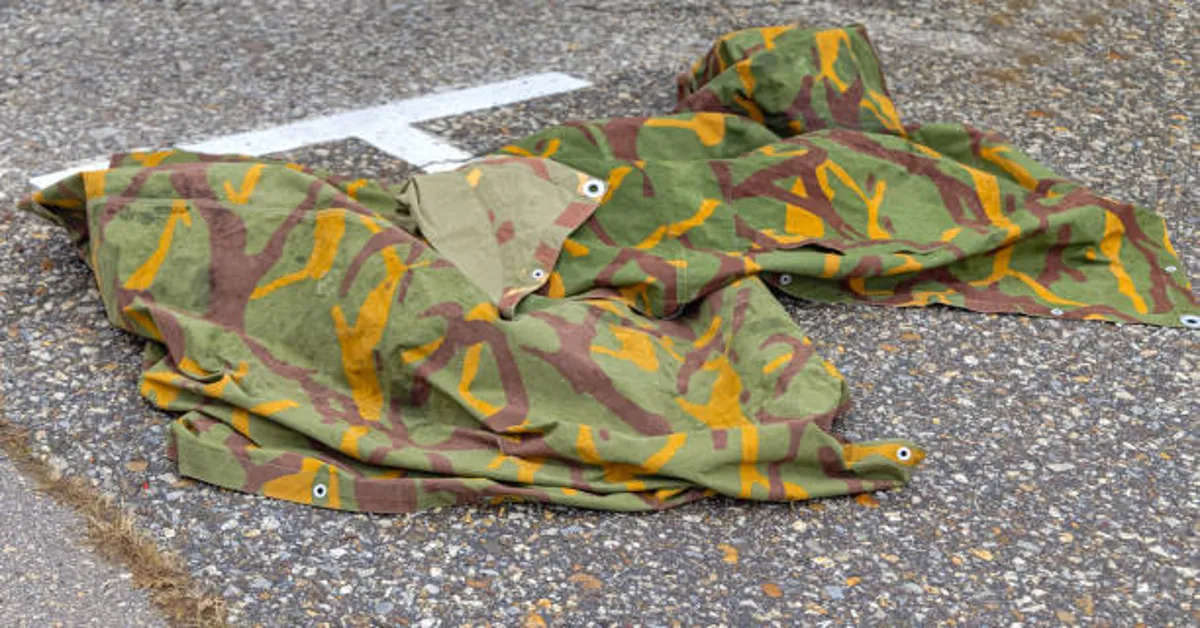Introduction
Tarnplanen, commonly known as camouflage tarpaulins or camo tarps, are durable, weather-resistant coverings designed to blend with natural surroundings. These versatile sheets are widely used in military operations, outdoor recreation, camping, construction, and agricultural fields due to their ability to provide reliable shelter while maintaining visual discretion. Their ability to hide equipment, vehicles, or campsites from both human and electronic detection makes them indispensable in many professional and personal applications.
In this article, we will explore the detailed characteristics, types, materials, uses, installation techniques, and maintenance practices for Tarnplanen. We’ll also cover how to choose the right camo tarp for specific needs and environments.
What is a Tarnplanen?
A Tarnplanen is a type of tarpaulin that features a camouflage pattern, typically designed to mimic the colors and textures of the surrounding environment. The word “Tarn” originates from the German word for “camouflage,” and “Planen” refers to a tarp or sheet. Therefore, Tarnplanen literally translates to “camouflage tarp.”
These tarps are made from heavy-duty materials like polyethylene, polyester, canvas, or PVC-coated fabrics. Their surfaces are treated to resist water, mildew, UV radiation, and wear from harsh environmental conditions. They usually come with reinforced edges and grommets, allowing for secure tying, hanging, or pegging.
Primary Features of Tarnplanen
- Camouflage Design
Tarnplanen come in various camo patterns, such as woodland, desert, urban, digital, snow, and jungle. These patterns are created using natural color palettes—browns, greens, grays, and beiges—that help them merge seamlessly into different landscapes. - Durable Construction
Designed to withstand tough conditions, Tarnplanen are built from robust materials like ripstop nylon, PVC-laminated polyester, or woven polyethylene. These fabrics ensure the tarp doesn’t tear easily and has a long lifespan. - Waterproof and UV-Resistant
Most Tarnplanen are waterproof or water-repellent, ensuring that they can shield gear, people, or supplies from rain and moisture. UV-resistant coatings prevent degradation under direct sunlight, making them suitable for prolonged outdoor use. - Reinforced Corners and Grommets
High-quality Tarnplanen are equipped with reinforced edges and metal grommets or eyelets that facilitate secure fastening and prevent tearing during high winds or tension. - Multiple Sizes and Shapes
Tarnplanen are available in a wide range of sizes, from small 2×3 meter covers to large 10×12 meter or custom-dimensioned sheets. Some also feature triangular or irregular shapes to better suit specific uses.
Types of Tarnplanen
Tarnplanen come in several variations depending on material, design, and intended application:
1. Polyethylene Tarnplanen
These are lightweight and cost-effective, made of woven plastic fibers. They are perfect for short-term use in camping or event setups. Though not as rugged as canvas or PVC, they provide decent weather protection.
2. Canvas Tarnplanen
Canvas tarps offer breathability and strength. They are often used for military and industrial applications due to their resilience. These tarps are heavier and more expensive but provide excellent durability and camouflage.
3. PVC-Coated Tarnplanen
PVC (polyvinyl chloride) coatings provide complete waterproofing and UV protection. They are ideal for long-term outdoor installations, especially where weather exposure is constant. These are commonly used in military bases, logistics operations, and farm shelters.
4. Ripstop Nylon Tarnplanen
These are favored by campers and hikers. Ripstop nylon is lightweight yet strong due to its interwoven reinforcement threads. It provides sufficient waterproofing and packs easily, making it ideal for portable use.
5. Mesh Camouflage Nets
While technically not solid tarps, camo nets are often grouped under Tarnplanen. They allow airflow and partial visibility, which is useful in hot climates or when visual concealment is prioritized over weather protection.
Applications of Tarnplanen
The use of Tarnplanen is widespread due to its practical benefits and versatility. Here are some of the most common applications:
Military and Tactical Use
The original and most common application for Tarnplanen is in the military. Soldiers use these tarps to conceal vehicles, equipment, ammunition, and temporary outposts. The camouflage aspect is critical in hiding objects from aerial or ground reconnaissance, both visually and through infrared or radar imaging.
Camping and Outdoor Recreation
Campers, hikers, and survivalists use Tarn planen as makeshift shelters, ground covers, windbreaks, or rain covers. They provide a reliable form of shelter that does not stand out in natural environments.
Hunting Blinds and Wildlife Observation
Hunters use Tarn planen to construct blinds or cover gear. Wildlife photographers and researchers also rely on these tarps to stay hidden while observing animals in their natural habitat.
Construction and Maintenance Work
Tarnplanen are used to cover machinery, tools, and construction materials. In areas where visual aesthetics or discretion are important—such as parks or protected zones—camouflaged tarps blend better than brightly colored alternatives.
Agricultural Protection
Farmers use camo tarps to cover hay, protect livestock feeding areas, and provide temporary shelter for animals. The tarps help regulate temperature and shield against rain, wind, or sun.
Vehicle and Equipment Coverings
Boats, trailers, ATVs, and machinery are often protected using Tarn planen. These tarps shield the vehicles from environmental damage while also keeping them discreet.
How to Choose the Right Tarnplanen
Choosing the correct Tarn planen depends on the specific need and environment. Here are key factors to consider:
Material Strength and Weight
Lightweight tarps (ripstop or poly) are easier to carry but less durable. Heavier tarps (canvas or PVC) offer better protection and longevity. Consider whether the tarp needs to be portable or semi-permanent.
Camouflage Pattern
Pick a camo pattern that matches the surroundings. Woodland is ideal for forests, desert camo for arid areas, snow camo for winter zones, and urban camo for concrete-heavy environments.
Size and Shape
Ensure the dimensions are adequate for the intended use. Large tarps are good for shelters and equipment coverage, while smaller ones are sufficient for personal use or ground coverage.
Water and UV Resistance
For prolonged outdoor exposure, opt for waterproof and UV-resistant tarps. This feature ensures protection against fading, mildew, and material degradation.
Attachment Points
Look for tarps with reinforced grommets or loops at appropriate intervals. This allows you to securely anchor or tie down the tarp without risking rips.
How to Use Tarnplanen Properly
- Shelter Setup:
Use poles, trees, or pre-existing structures to tie the tarp. Angle it to allow water runoff and maximize wind resistance. - Gear Protection:
Cover tools, bags, or machinery with the tarp and use bungee cords or rope to secure the cover. Always make sure there is some ventilation to avoid condensation. - Ground Covering:
Lay the tarp flat under sleeping bags or tents to prevent moisture from the ground seeping in. - Blinds or Concealment:
Hang vertically or drape over structures to hide from view. Break up outlines with branches or debris if more discretion is needed.
Maintenance and Storage
Maintaining your Tarn planen is crucial for long-term usability.
- Cleaning:
Use mild soap and water to clean off dirt, grime, or bird droppings. Avoid harsh chemicals that can degrade coatings. - Drying:
Always dry the tarp completely before folding and storing. Mold and mildew can develop in damp, folded tarps. - Inspection:
Check for rips, loose grommets, or fraying edges. Patch minor damage using tarp repair tape or fabric patches. - Storage:
Store in a cool, dry area away from sunlight. Roll or fold neatly to avoid creases that may weaken the fabric over time.
Environmental Considerations
Some Tarn planen materials are recyclable, but many are made from synthetic materials that don’t biodegrade easily. Whenever possible, choose environmentally friendly options like canvas with natural dyes, or recyclable polyethylene. Avoid burning old tarps as they may release harmful chemicals.
Innovations in Tarnplanen Technology
Modern Tarnplanen now incorporate advanced technology such as:
- Infrared Concealment Coatings: Prevent detection from thermal imaging.
- Self-Healing Materials: Fabrics that can seal small punctures automatically.
- Color-Shifting Camouflage: Adjusts to different light environments for better concealment.
These features are primarily available in military-grade tarps but are gradually entering commercial markets.
Conclusion
Tarnplanen are more than just sheets of fabric; they are strategic tools used in a variety of fields from military applications to leisure camping. Their value lies in their durability, concealment capabilities, and adaptability. Whether you are hiding a vehicle in the wilderness, creating a shaded shelter, or covering equipment on a construction site, the right Tarnplanen can offer protection, privacy, and reliability.
To make the best use of Tarn planen, one must understand the needs of the environment, choose the right material and pattern, and properly maintain the tarp for long-term use. As innovations in camouflage and fabric technology continue to evolve, Tarn planen will remain a crucial utility product for both professionals and outdoor enthusiasts.
ALSO READ: Keyword Optimization by Garage2Global: A Comprehensive Guide to Strategic Digital Visibility
Frequently Asked Questions (FAQs)
1. What is the best material for a Tarnplanen?
Canvas and PVC-coated polyester are considered the most durable materials for Tarnplanen due to their resistance to tearing, UV damage, and water.
2. Can Tarnplanen be used in winter or snowy conditions?
Yes, many Tarnplanen are designed with snow camouflage and materials that remain flexible in freezing temperatures, making them suitable for winter use.
3. How do I clean a Tarnplanen without damaging it?
Use a mild detergent and soft brush or cloth to clean the surface. Avoid harsh chemicals or high-pressure washing to preserve the coating.
4. Are Tarnplanen environmentally friendly?
Some types, like canvas tarps, are more eco-friendly than synthetic versions. Always look for recyclable or biodegradable options if sustainability is a concern.
5. Do Tarnplanen offer UV protection for items underneath?
Yes, most high-quality Tarnplanen include UV-resistant coatings that protect both the tarp and the items it covers from sunlight damage.









